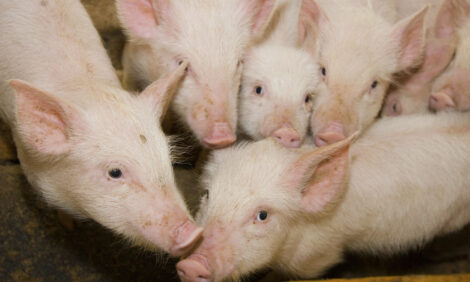



New web-based tool supports surveillance and control of PRRS
Research published in Porcine Health Management shows how one pilot scheme sharing data between vets can allow efficient tracking of the PRRS virus.The study was conducted by researchers Marie-Ève Lambert, Pascal Audet, Benjamin Delisle, Julie Arsenault and Sylvie D’Allaire from the Laboratoire d’épidémiologie et de médecine porcine (LEMP), University of Montreal.
Porcine reproductive and respiratory syndrome (PRRS) is a viral disease that has two overlapping clinical presentations; complications with reproduction and respiratory disease in pigs of any age.
The clinical signs can vary tremendously from one herd to another. As a guide, for every three herds that are exposed to PRRSv for the first time; one will show no recognisable disease, the second would show mild disease and the third moderate to severe disease. The reasons for this are not clear, however, what is known is that the higher the health status of the herd, the less severe are the disease effects – possibly due to less/ better controlled opportunist pathogens in the pigs environment. Another theory is that as the virus mutates (changes) as it spreads between herds, sometimes it results in a mild strain and at other times a highly virulent strain.
Control of PRRS represents a tremendous challenge for the pig industry and, according to the current study, the trend is now toward managing the disease collectively rather than on a herd by herd basis.
The study
In Quebec, area and regional control and elimination (ARC&E) initiatives started in 2011; diagnostic testing, including ORF5 sequencing, and sharing of information among stakeholders are largely promoted. At the provincial level, a data-sharing agreement was signed by Quebec swine practitioners allowing PRRS virus (PRRSV) sequences to be transferred to a database maintained by the Laboratoire d’épidémiologie et de médecine porcine (LEMP-DB). Several interactive tools were developed and are available to veterinarians to allow comparison of PRRSV ORF5 sequences within ARC&E projects or provincially while managing confidentiality issues.
Results
- Between 1 January 2010 and 31 December 2018, 4346 PRRSV ORF5 sequences were gathered into the LEMP-DB, involving 1254 sites and 43 practising veterinarians. Approximately 34 percent of the submissions were from ARC&E projects.
- Using a novel web-based sequence comparison tool, each veterinarian has access to information on his/her client sequences and can compare each sequence with 1) commercial vaccine strains, 2) historical samples from the same site, and 3) all sequences submitted to the database over the last 4 years.
- Newly introduced PRRSv into breeding herds can be monitored using a new sequence comparison tool based on comparison of sequences at the provincial level.
- Each month, graphs providing the number of introductions per month and the yearly cumulative are updated.
- Between 1 August 2014 and 31 December 2018, 233 introductions were detected on 180 different breeding sites.
- Following a data-sharing agreement, veterinarians involved in ARC&E projects have access to an interactive mapping tool to locate pig sites, compare sequence similarity between participating sites and visualise the results on the map.
Conclusion
The structure developed in Quebec to collect, analyse and share sequencing data was efficient to provide useful information to the swine industry at both provincial and regional levels while dealing with confidentiality issues.
| References | ||||
|---|---|---|---|---|
| Marie-Ève Lambert, Pascal Audet, Benjamin Delisle, Julie Arsenault and Sylvie D’Allaire. | ||||
| (2019) | Porcine reproductive and respiratory syndrome virus: web-based interactive tools to support surveillance and control initiatives. Porcine Health Management,5:10. |








